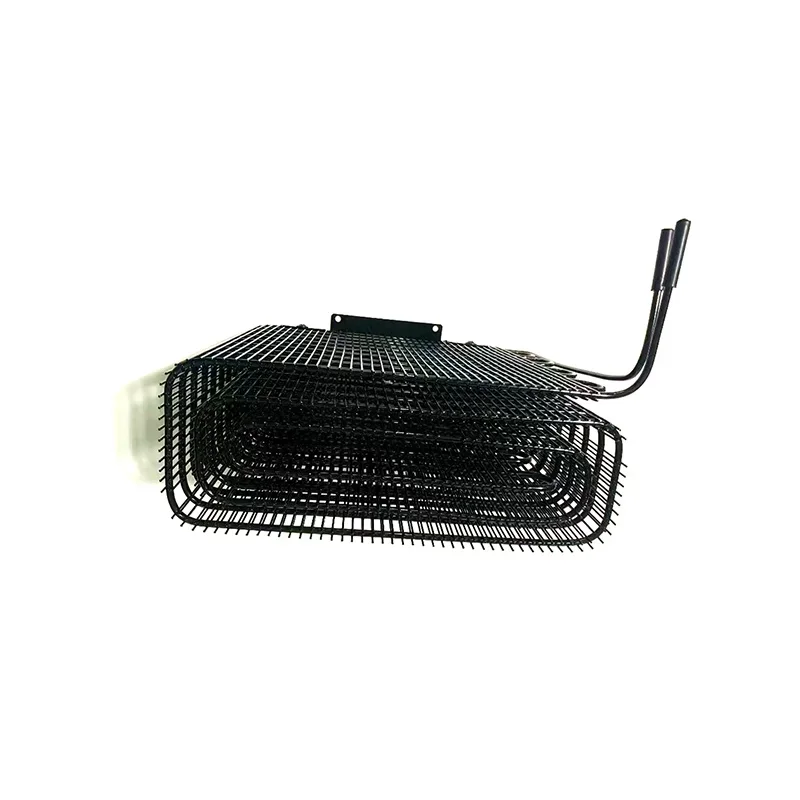Wire-tube condenser is a common heat exchanger, widely used in refrigeration, air conditioning, automobiles, ships and other fields. Its development history can be traced back to the late 19th century. With the continuous advancement of science and technology, its structure and performance have also been continuously improved and improved.

The concept of wire-tube condensers dates back to the early 19th century. At that time, people began to use steam engines to drive machines and equipment, but the heat emitted by the steam engines needed to be efficiently discharged, otherwise the machines would overheat and be damaged. The initial solution was to use a water cooler, but this method was inefficient and required large amounts of water and space. Therefore, people began to research more efficient heat exchangers.
In the mid-19th century, people began to use shell-and-tube heat exchangers, which consist of many small tubes placed in a large shell. Heat is transferred from one fluid to another through small tubes. Such heat exchangers are much more efficient than water coolers, but they can easily become clogged with dirt and corrosion and require frequent cleaning and maintenance.
In the early 20th century, people began to study the concept of wire-tube condensers. This heat exchanger is made up of many small tubes and small metal wires wrapped around the tubes. This structure allows it to transfer heat efficiently and is not easily clogged by dirt and corrosion. However, it was very difficult to manufacture such a heat exchanger under the technical conditions at the time, so it was not widely used.
With the advancement of manufacturing technology, the application of wire-tube condensers has gradually expanded. They are now widely used in many different applications, including air conditioners, cooling towers, automotive cooling systems, and heat exchangers in industrial production.
In air conditioners and cooling towers, wire-tube condensers are often used to transfer heat from the coolant to the air. The structure of this heat exchanger allows it to transfer heat efficiently and is not easily clogged by dirt and corrosion. This makes them ideal for use in air conditioners and cooling towers.
In automotive cooling systems, wire-tube condensers are often used to transfer heat from engine coolant to the air. The structure of this heat exchanger allows it to transfer heat efficiently and is not easily clogged by dirt and corrosion. This makes them ideal for use in automotive cooling systems.
In industrial production, wire-tube condensers are often used to transfer heat from one fluid to another. The structure of this heat exchanger allows it to transfer heat efficiently and is not easily clogged by dirt and corrosion. This makes them ideal for industrial production.
In summary, the development of line tube condensers has been a gradual process, with some innovations and improvements along the way. From the early copper tube and wire tube condensers of the late 1800s to today's microchannel wire and tube condensers, wire tube condensers have come a long way in efficiency, durability, and versatility. As the refrigeration and air conditioning industry continues to evolve, it is likely that line tube condensers will continue to play a key role in the design and operation of these systems.
https://www.ningbo-senjun.com/Revealing-the-development-history-of-wire-tube-condenser.html






Comments (0)